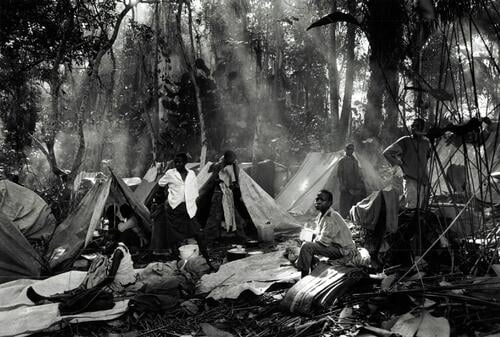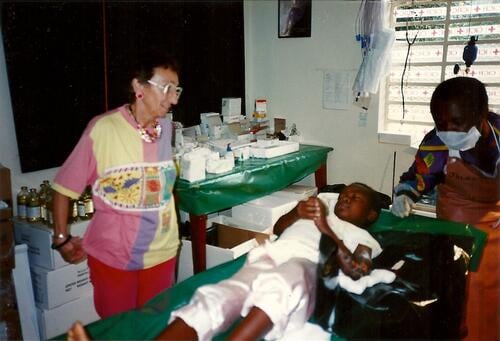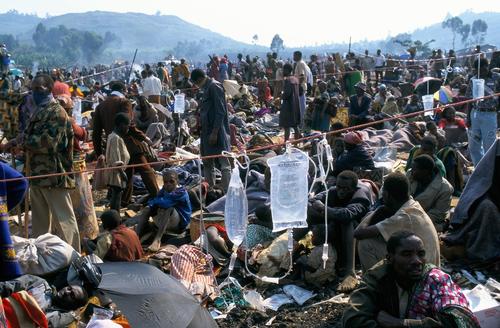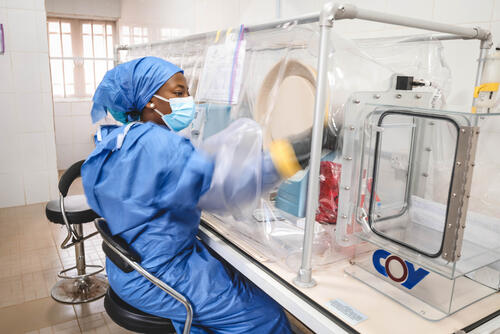Twenty-five years after the terrible violence and genocide in Rwanda, we look back on our view of the events, when we were often on the frontlines, and the assistance our teams were providing at the time.
From early April 1994, Médecins Sans Frontières (MSF) teams witnessed and faced extreme violence in Africa’s Great Lakes region, which covered Burundi, the Democratic Republic of the Congo (then known as Zaire), Kenya, Malawi, Rwanda, Tanzania and Uganda. The violence included the horrific genocide of Tutsis in Rwanda.
Background
Médecins Sans Frontières began working in Rwanda in 1982. In October 1990, civil war broke out between the Rwandan Armed Forces (RAF) (representing the Hutu-led government of President Juvénal Habyarimana) and the Tutsi-backed armed Rwandan Patriotic Front (RPF) forces comprised of Tutsis born in exile and based in Uganda. The RPF entered Rwanda from the north seeking to overthrow President Juvénal Habyarimana’s government, but they were halted by the RAF.
The Rwandan government, backed by France and Zaire, narrowly avoided being defeated. Peace talks on power sharing and returning exiled Rwandans to their country were initiated and, in 1993, the Rwandan government and RFP representatives signed the Arusha Accords. However, the Accords never came into effect; a ceasefire ended abruptly on 6 April 1994, when the plane transporting President Juvénal Habyarimana was shot down during its descent to Kigali.
When the subsequent massacres began, MSF teams were working in almost all of Rwanda’s prefectures. An estimated 500,000 to 800,000 Tutsis, and numerous Hutus opposing the slaughter, were executed in just 100 days.
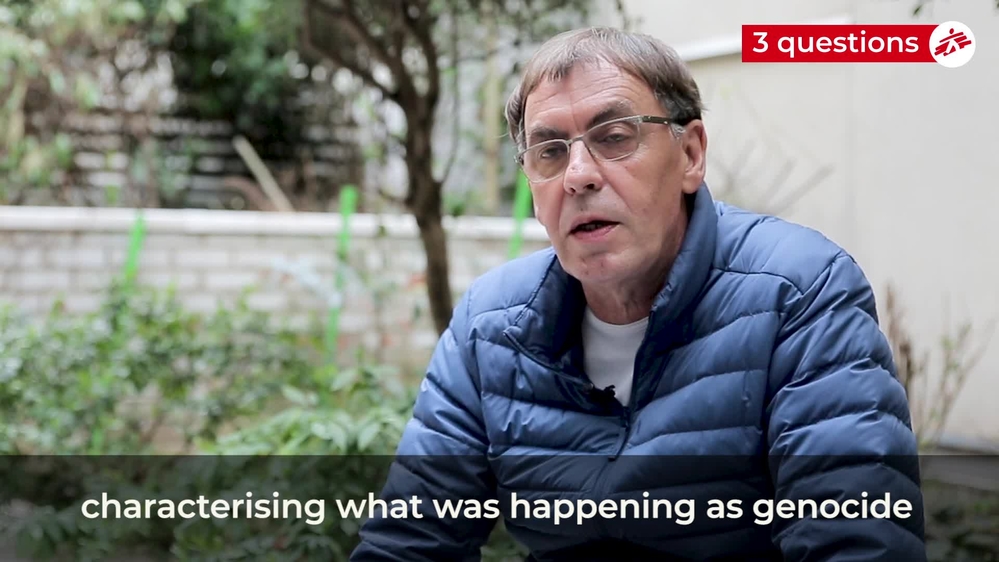
3 questions: Jean-Herve Bradol on violence in Great Lakes region 1994-1997
Context
During the period 1994 to 1997, MSF teams providing assistance against a background of extreme violence and wholesale slaughter in the Great Lakes region found themselves faced with a succession of unprecedented situations. Before then, the teams had been mainly working in refugee camps and health centres some distance from the fighting and massacres. As the genocide against the Rwandan Tutsis was set into motion, our teams in Kigali and other places across the country witnessed the first executions. Almost 200 members of our Rwandan staff were murdered, some of them in front of their colleagues.
When MSF teams finally succeeded in assembling the resources required for an aid operation—in this case, a surgical programme—patients were either killed before their very eyes or a few hours after they left.
After their military defeat in mid-1994, the perpetrators of the genocide retreated to Zaire (now known as Democratic Republic of Congo), taking the same route as hundreds of thousands of Rwandan Hutus fleeing the country because they had been threatened or feared reprisals from the rebellion. MSF staff members not only had to contend with a health disaster brought on by the combined effects of cholera and dysentery, but also the violence meted out by militiamen who seized control of the camps.
In 1995, seeing that humanitarian aid was being diverted to the benefit of the perpetrators of the genocide, we took the decision to suspend our work in the camps in Zaire. These camps then came under attack from the recently formed Rwandan army and its Congolese allies. Hutu refugees were hunted down, often over hundreds of kilometres, and then executed. Our teams, who became more and more vocal in denouncing these atrocities, at times unwittingly served as bait to incite the refugees to come out of the forests where they were hiding.
Under these conditions, and faced with genocide and mass crimes, how did our teams react? We called for military intervention, condemned an unacceptable situation, stayed put in camps where aid was misappropriated, and assessed the risks involved in helping people threatened with death…
These were the many issues that MSF teams had to grapple with, as much in the field as during the internal discussions which gripped the whole organisation.
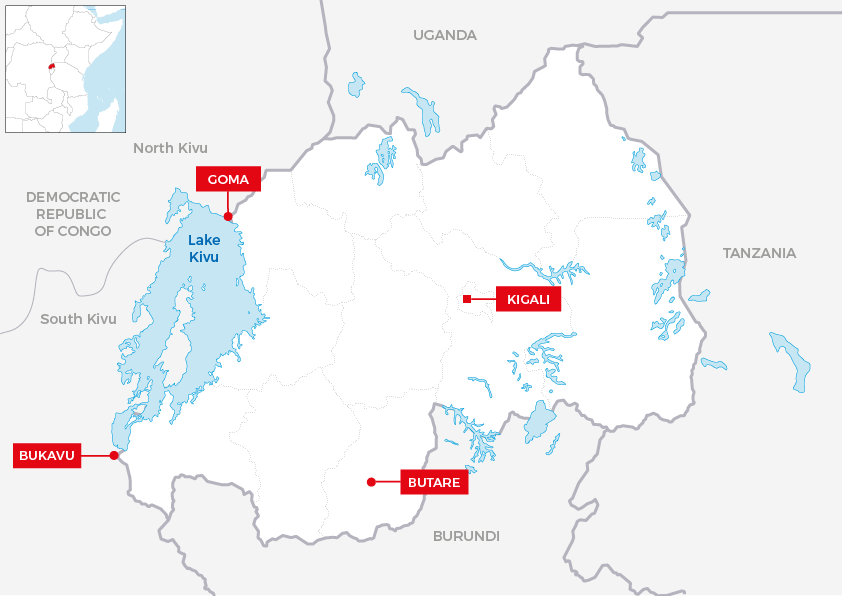
MSF caught in the middle of genocide
Frequently confined to their homes for reasons of security from 7 April 1994 on, our teams were witnesses to the violence perpetrated against the population. When our teams attempted to help their neighbours in nearby houses, militiamen threatened them and ordered Tutsis to hand themselves in. In one such incidient in Murambi, a town about 20 kilometres from Kigali, militiamen armed with clubs and machetes murdered a man right in front of several MSF volunteers.

MSF teams tried to get out of the country, but the army refused to allow Tutsi staff to leave and forced them to turn back. Our premises were looted and attacked, and staff were separated into two groups—like in the Burundian refugee camps in Butare prefecture where Tutsi MSF staff were executed by their Hutu colleagues who, themselves threatened with death by the army and the militiamen, had no choice but to obey.
In view of the widespread insecurity, fighting between the Armed Forces and the Patriotic Forces, mass executions in Kigali, and after having attempted—unsuccessfully—to implement an emergency response plan, on 11 April MSF teams were airlifted out. Within only a few days, thousands of people had already been executed.

On 14 April, a team of experienced volunteers returned from neighbouring Burundi to the Rwandan capital to set up a surgical programme. University Central Hospital of Kigali, which should have been used for treating the wounded, instead became a slaughterhouse where the perpetrators of the genocide would go and execute them. The decision was then taken to open a field hospital under the coordination of the International Committee of the Red Cross (ICRC).
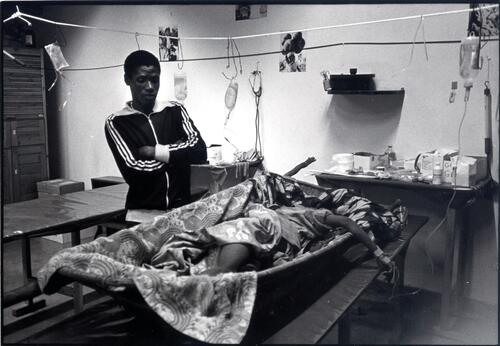
Humanitarian aid consisted primarily in transporting patients in need of surgery to the field hospital and providing medical treatment in places where people in danger had taken refuge. But these places—orphanages, schools, religious institutions—were routinely visited by the genocidal forces who killed the able-bodied and finished off the wounded, frequently soon after our teams had left.
Nearby houses were added to the field hospital that became a place of refuge where the wounded who succeeded in getting to it could recuperate in relative safety. But, as soldiers and militiamen searched the vehicles of ambulance staff going to Kigali to assist people who had been attacked, it was all but impossible to transport Tutsi men. Endless gruelling negotiations were also necessary for Tutsi women and children.
For several weeks, our teams assessed on a case-by-case basis the prospects and risks of transporting the wounded in a city beset by fighting. They continued to treat injured patients in Kigali and do what they could to shelter hundreds of people in our field hospital encircled by a genocidal machine.
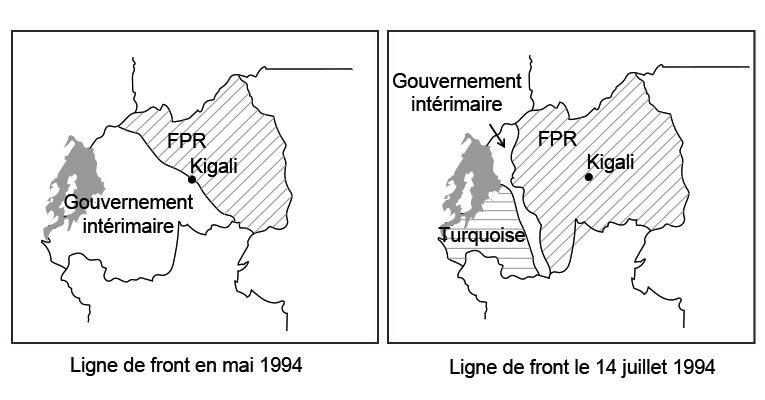
On 4 July, the RPF took Kigali and crushed the government’s military forces. An estimated 500,000 to 800,000 people were exterminated—200 of them were Rwandan members of our staff.
Breaking the silence
During the weeks immediately after President Habyarimana’s assassination, MSF teams still in the field speculated about the scale of the massacres being perpetrated. Refugees streaming into neighbouring countries spoke of targeted, wholesale slaughter. Focused on what they could do to save lives—including their own— it was only when they returned from Rwanda in April that some members of our staff came to understand the magnitude of the massacres. To begin with, as our presence in the country was limited to Kigali and Butare prefecture, our perception of what was unfolding was somewhat sparse.
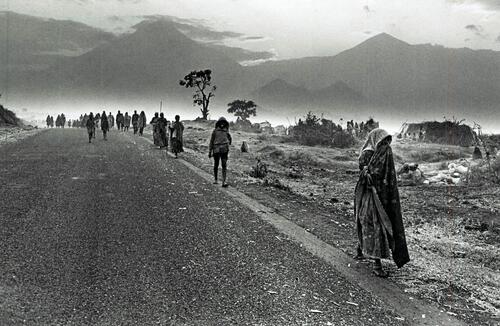
MSF teams in Kigali left the ICRC to handle communication. Dropping its customary reserve—based on the principle of neutrality to which international humanitarian aid organisations also adhere— the ICRC condemned “a systematic slaughter”, but without going so far as to speak of genocide. First mentioned in internal discussions within MSF on 13 April, the term ‘genocide’ came to be used more explicitly after the massacres in Butare 10 days later. What took place in the prefecture, until then relatively unscathed, no longer left any possible doubt. Massacres were indeed being perpetrated on a massive scale.
Although Médecins Sans Frontières denounced genocide in our communications—not always initially entirely consistently— an issue of fundamental importance caused a lot of angst within the organisation. Was intervention by the international community desirable? What would it achieve? The teams’ primary concern was rescuing Tutsis and those opposing their slaughter who could still be saved. We decided to do more to ensure our voice was heard.
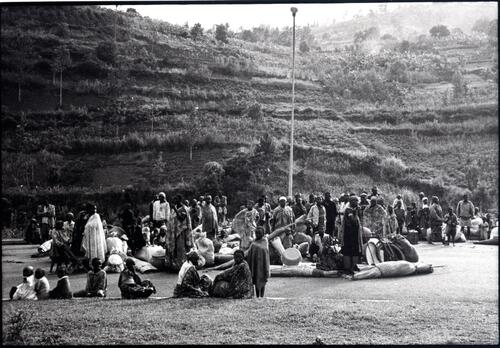
On 16 May, MSF’s operations manager in Kigali returned to Paris. He criticised France’s government on a major French TV station and questioned its responsibility in the events unfolding in Rwanda. But a meeting held three days later with the directors of the French Presidency’s ‘Africa Unit’ yielded no tangible result. The French government was not prepared to exert pressure on its Rwandan allies to put a stop to the killings.
An op-ed published in the New York Times on 23 May calling on the UN Security Council to intervene met with a similar response. In reality, too-few UN peacekeeping forces were deployed in Rwanda and they did not have the necessary mandate to influence the course of events.
On 21 April, the numbers of UN peacekeepers were reduced by 90 percent, just 270 men, which was insufficient to ensure the security of humanitarian operations to assist the wounded. Moreover, the UN General Secretary’s appeals for military intervention also went unheeded.
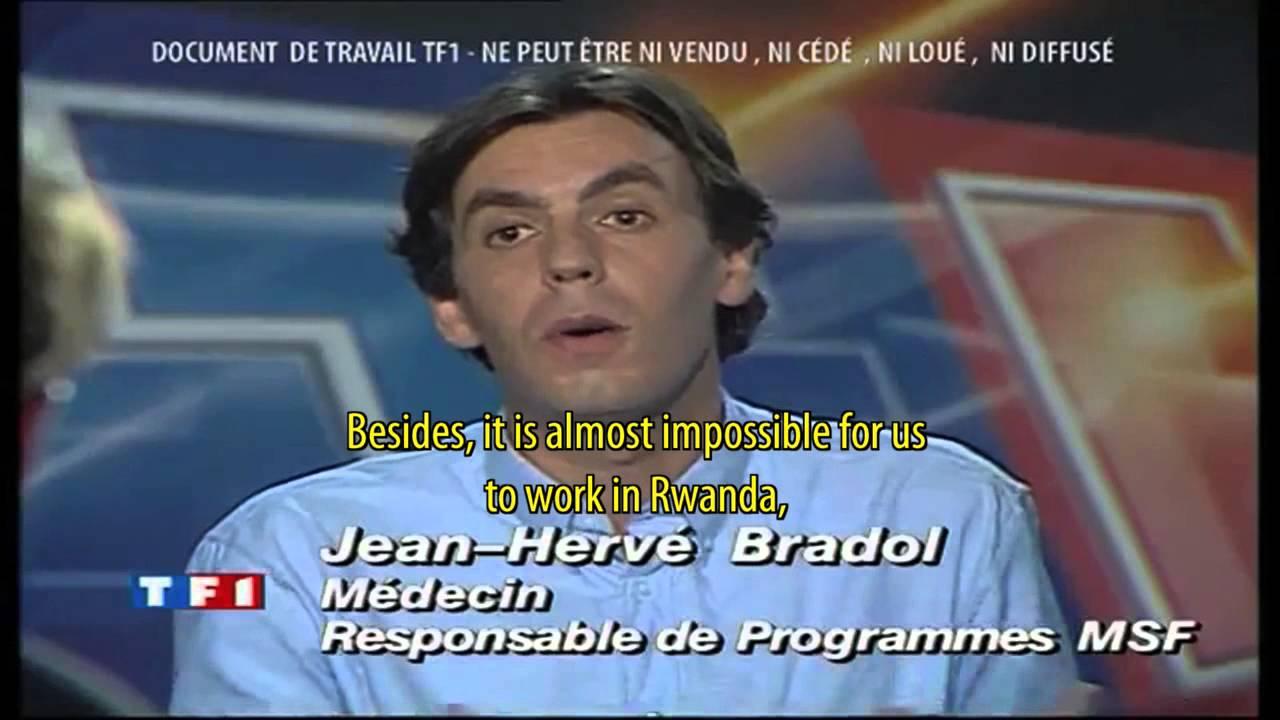
199 French TV interview with Jean-Herve Bradol on Rwandan genocide and refugee crisis
After a month of public statements, calling for answers and with no concrete response from the international community, Médecins Sans Frontières decided to hold a press conference to trigger UN intervention. The organisation was unambiguous in our demand for the deployment of military troops to Rwanda, because “you can’t stop a genocide with doctors.”
On 18 June 1994, with the support of Senegal, France launched Operation Turquoise. Troops deployed to Rwanda progressively took control of the southwest of the country, the Rwandan Patriotic Front the northwest, and the interim government formed after Juvénal Habyarimana’s death was defeated. The perpetrators of the genocide were losing the war, but France’s military intervention gave them free rein to flee to Zaire and assume control of the refugee camps.
Rwandan refugee camps in Zaire
As early as July 1994, hundreds of thousands of Hutu refugees began fleeing Rwanda out of fear of reprisals or because they had been threatened by the genocidal authorities. Among these fleeing populations, three-quarters of whom were women and children, were those either responsible for the genocide or its perpetrators—soldiers and militiamen, some of whom were heavily armed. Humanitarian aid operations were launched, including by our teams who were present in all of the countries sharing a border with Rwanda, to assist the refugees.
Once in Zaire, the refugees assembled close to the border in and around towns such as Goma, Bukavu and Katale in North Kivu and South Kivu.
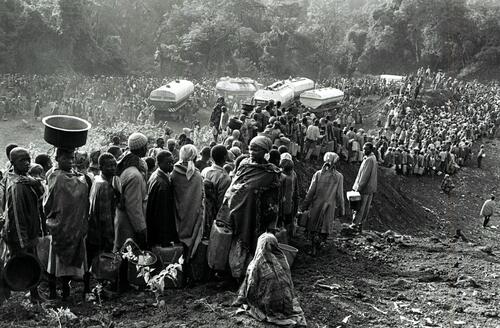
Our teams described the medical, health and nutritional situation as catastrophic. Epidemics of cholera, dysentery and meningitis were decimating the refugees—almost 50,000 died during the first month of their arrival. In the cholera treatment centres set up and run by MSF, there were days with over 1,000 admissions. The teams implemented numerous activities, such as vaccination, equipping hospitals, conducting surveys and distributing dry rations to children under the age of five years. The overall rate of acute malnutrition in this age group frequently exceeded 21 percent.
We delivered our emergency response in a climate of increasing tensions. The teams had to evaluate their work on a case-by-case basis, according to the needs of the refugees and the threats posed by the presence of soldiers from the former Rwandan army and the militiamen who wielded the power in the camps. There were more and more security incidents and our teams became the targets of threats fuelled by unfounded rumours and propaganda campaigns. They also saw with their own eyes the violence committed against civilians.

Meanwhile, humanitarian aid was being massively misappropriated by extremist leaders, which left some refugees without relief. MSF estimated that almost a quarter of the refugees in Katale camp were receiving insufficient food rations. This context of widespread violence and misappropriation of aid raised questions for our managers and the teams providing assistance in the camp. Humanitarian aid was not reaching the most vulnerable and we were unintentionally supporting a militarised system run by perpetrators of genocide. Given these circumstances, should we continue our intervention? The first MSF section decided to pull out of the Zairian camps in November 1994 and the other sections followed suit in the months that followed.
Hunting down and slaughtering the refugees
The camps sheltering hundreds of thousands of Rwandan refugees in Zaire served as a rear base for the genocidal soldiers and militiamen to regroup and launch deadly attacks against civilians in Rwanda. Tensions rose between Rwandan-speaking communities, some of them long established in Zaire, and resulted in a rapid succession of attacks and counter-attacks. At the same time, the Alliance of Democratic Forces for the Liberation of Congo-Zaire (AFDL) led by Laurent-Désiré Kabila was formed. The AFDL joined forces with the Rwandan Patriotic Front to launch a territorial conquest from the east of the country.
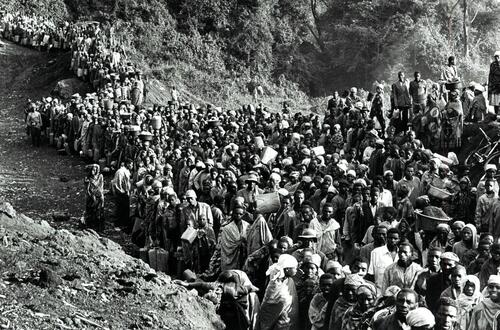
By October 1996, the rebellion already controlled part of South Kivu and was providing support to the Rwandan and Burundian armies with attacking Rwandan refugee camps. During the following weeks, the political and military situation changed radically in North Kivu and South Kivu. Towns across the region fell, one after the other, and around 40 refugee camps in Goma, Bukavu and Uvira were attacked and looted. Hundreds of thousands of refugees fled to escape the fighting and slaughter, some to the interior of Zaire and others back to Rwanda. MSF pulled our teams out of Zaire and sent them to Rwanda.
At the beginning of November, MSF launched a public appeal calling for the setting up of a safe zone for the refugees and intervention of an international army. Many organisations and humanitarian aid workers on the ground began to speculate about whether there were there any Rwandan refugees left in Zaire, or had they all returned to Rwanda?
According to some organisations, including the US administration, if there were none or only a few, military intervention was not needed to set up a safe zone. Others equipped, like MSF, with reliable information, estimated that 700,000 Rwandans were still trapped in Zaire. In the end, after pressure from the powers that be in Rwanda, the AFDL and the countries supporting them, on 14 December 1996 the United Nations ordered the international force, which was poised to intervene, to stand down.
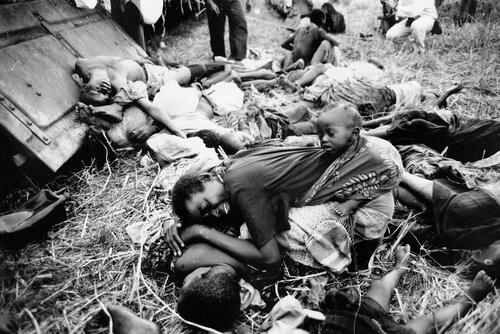
Our teams working in the field organised an emergency response to help refugees fleeing from the fighting. They set up health posts and facilities to be able to provide care to the men, women and children amassed in Tingi-Tingi camp situated between Goma and Kisangani. At the end of December 1996, we estimated there were over 70,000 refugees in the camp, but with the advance of the AFDL and Rwandan Patriotic Army (APR), people were still arriving.
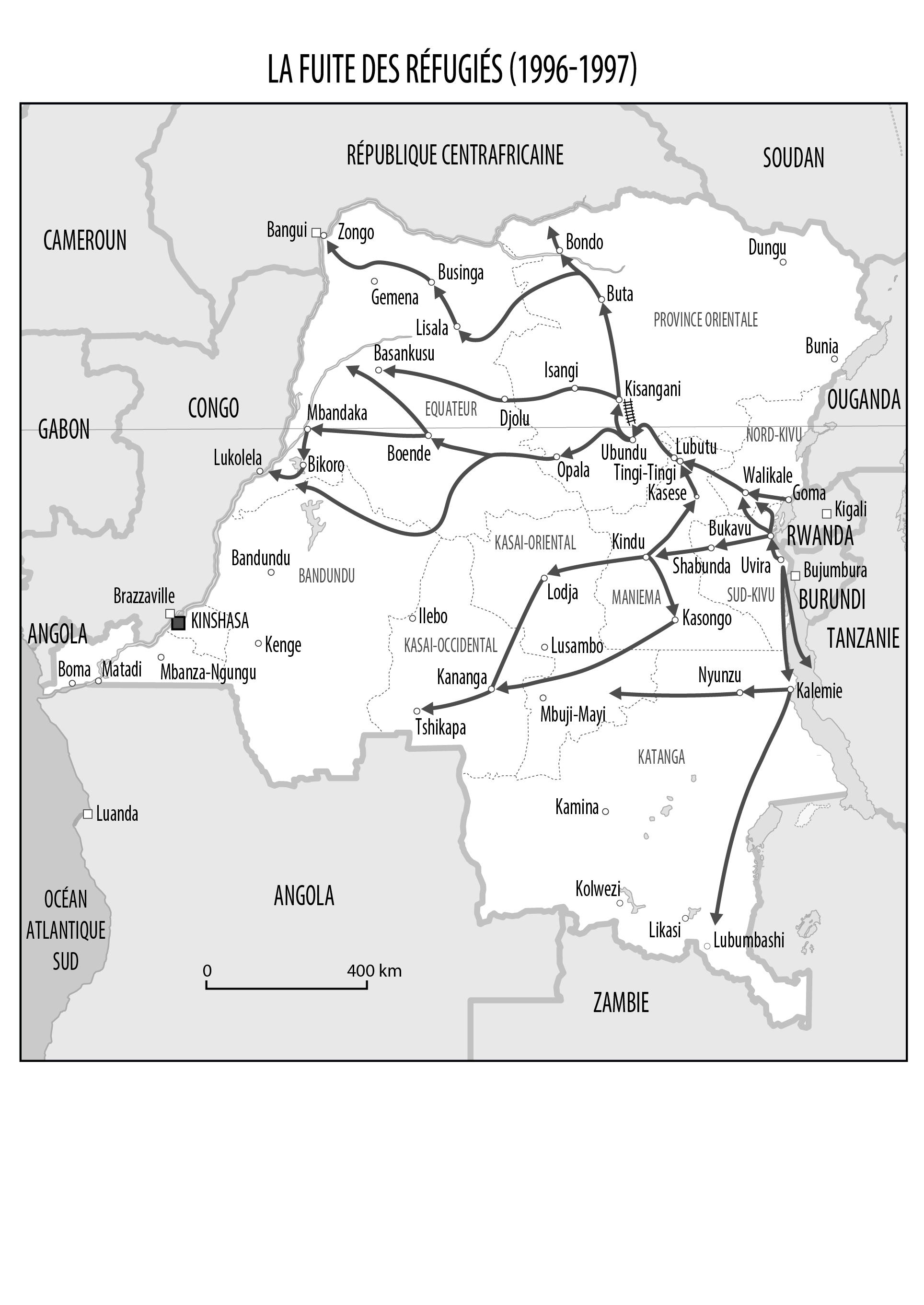
The refugees’ needs, particularly food, were immense, and this created tensions with the humanitarian aid organisations. Mortality rates exceeded the emergency threshold, partly due to malaria and malnutrition. In February 1997 there were over 160,000 people in Tingi-Tingi camp that fell to the Alliance forces at the beginning of the following month.
The refugees, accompanied by local people also fleeing the fighting, took flight once again, this time to the interior of Zaire. The objective of the military offensive launched by the AFDL and the RPA was to seize power in Kinshasa, secure the return of Rwandan refugees to their country, and exterminate all those who did not immediately give themselves up. Tens of thousands of refugees went into hiding in the camps and dense forests along the Ubundu to Kisangani railway line.
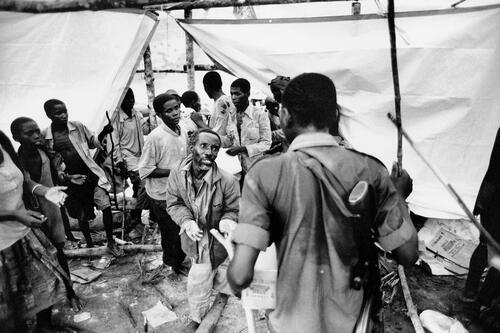
The AFDL considered these people enemies, and our teams assisting them belatedly became aware of a deadly plan in the making. In April 1997, the soldiers were not only killing refugees on a massive scale but were also using humanitarian aid organisations as bait to entice them out of hiding. Some camps, such as Biaro, were emptied. When the humanitarian organisations were able to access them again, there only a few survivors among the corpses.
Some of the survivors of the massacres walked 2,000 kilometres, sometimes going deep into the rainforest, in an attempt to reach Congo-Brazzaville and escape the slaughter. Despite our appeals and condemnations, it is estimated that nearly 200,000 people died during the hunt and ensuing slaughter.



